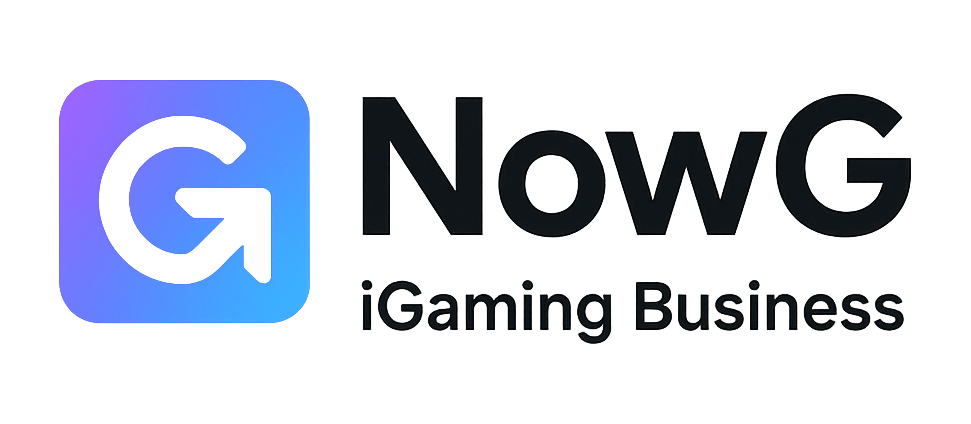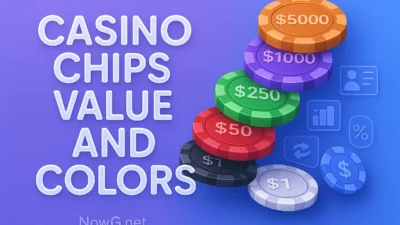Smart links are purpose-built, trackable URLs that route every click to the best destination based on context—device, geo, language, channel, campaign, even the stage of your buyer’s journey. Done right, they’re not just “short links”; they’re a lightweight link building toolset and an automation layer that quietly lifts CTR, lowers leakage, and feeds you campaign-level attribution without adding friction for users.
Why do they work so well? This year, mobile traffic dominates global browsing—which means users expect deep links that jump straight into apps, not generic home pages (see the global platform mix on StatCounter). Smart links bridge that last mile: one shareable URL, many outcomes—always the right one for the click.
What a “Smart Link” Really Is
We use “smart link” to describe an instrumented URL with four core capabilities:
| Capability | What it does | Why it matters |
|---|---|---|
| Context routing | Auto-detects device, OS, language, location, referrer | Eliminates dead ends (e.g., sends iOS users to App Store, EU users to localized page) |
| Deep linking | Jumps into specific screens in apps; falls back to web (deferred if app isn’t installed) | Fewer taps, higher conversion, better session quality |
| Attribution | Persists UTMs, passes campaign IDs, can append subIDs/partner IDs | Lets you prove which channels, creatives, and partners drive revenue |
| Presentation | Optional branded microsite/landing “hub” with multi-destinations | One link serves many platforms (choose Spotify vs. Apple; sportsbook A vs. B by GEO) |
Operationally, smart links act like a compact marketing automation unit: they normalize UTMs, log click metadata, and can trigger pixels or CRM events. For new teams, they double as a beginner-friendly guide to clean tracking; for experienced marketers, they’re the glue across paid, social, email, affiliate—and sales.
Beginner’s Setup: From Plain URLs to Smart Links
Start simple: wrap your most-shared URLs (homepage, top funnel content, key offers) with a branded short domain, consistent UTMs, and device/geo rules. Then expand to deep links and landing hubs as your library grows.
| Smart link type | Use this when | Must-have settings |
|---|---|---|
| Direct deep link | You want no page load—jump into an app or exact web path | iOS/Android app links, desktop fallback, UTM locks, pixel fire |
| Landing “hub” link | Users need choices (e.g., choose store, aggregator, or region) | Auto-sorting by GEO, custom order, branded domain, social preview |
| Rotator / A/B link | You’re split-testing offers, creatives, or payout tables | Weighted routing, holdout control, per-variant UTMs |
| QR smart link | Offline to online (events, print, OOH) | High-res QR, campaign-level UTM, device rules |
💡 Pro tip: Lock a UTM naming convention on day one: utm_source=channel, utm_medium=paid/social/email/partner, utm_campaign=offer or season, utm_content=creative ID. You’ll save yourself months of cleanup later.
Smart Links as Link Building Tools (That Actually Automate Work)
When we say “link building tools,” we’re not talking about spammy directories. We mean platforms that programmatically create, tag, route, and test links across your digital estate—then tell you which links deserve more budget. Smart links do exactly that: they’re API-friendly, automate UTM hygiene, embed pixels, and push event data into your analytics and CRM. That’s link building you can defend to the CFO.
Where Smart Links Shine (Use Cases by Team)
| Team | Use case | Why smart links |
|---|---|---|
| Affiliate & iGaming | Route by GEO/license to the right sportsbook/casino; rotate offers; track subIDs | Compliance-friendly routing, payout optimization, subID passthrough for networks |
| Content & SEO | Bundle “pillar” resources under one hub link; preserve UTMs across syndication | One URL for PR, social, email; consistent attribution everywhere |
| Paid Media | A/B offers, creative-specific UTMs, per-ad routing | Faster testing cycles; higher match rate between ad and landing |
| Sales (B2B) | Share one trackable asset pack (deck, one-pager, demo) | See who opened what, when; sync engagement into CRM via Smart Links in Sales Navigator |
| Partnerships | Co-branded links with partner IDs and revenue splits | Transparent performance and clean reconciliation |
| Events/OOH | QR to localized landing hubs; offline attribution | Measure city-level scans and on-site conversions |
Stack Choices: Smart Link & Link Building Platforms (2026)
Below is a vendor-agnostic snapshot. We’re not endorsing; we’re giving you a fast pattern match. Prioritize routing logic, deep linking, analytics, and governance (roles, SSO, audit logs) over bells and whistles.
| Tool | Geo/Device Routing | Deep Link | A/B Rotator | QR | Pixels/UTM | CRM Sync | Best for |
|---|---|---|---|---|---|---|---|
| Bitly / Rebrandly | ✅ | ➖ (basic) | ➖ | ✅ | ✅ | ➖ | Branded short links at scale |
| Geniuslink | ✅ | ➖ | ✅ | ✅ | ✅ | ➖ | Geo-localized ecom/affiliate catalogs |
| Branch / Firebase | ✅ | ✅ | ➖ | ✅ | ✅ | ✅ | Mobile deep linking & app attribution |
| Short.io / Switchy | ✅ | ➖ | ✅ | ✅ | ✅ | ➖ | SMB growth teams |
| Linktree / bio tools | ➖ | ➖ | ➖ | ✅ | ✅ | ➖ | Creator “all-in-one” pages |
| LinkedIn Smart Links | ➖ | ➖ | ➖ | ➖ | ✅ | ✅ | Sales content sharing & CRM writeback |
| Music-centric smartlinks | ✅ | ➖ | ➖ | ✅ | ✅ | ➖ | Artist/label multi-service hubs |
Need a shortcut? For mobile-heavy funnels, choose a deep-link-first stack (Branch/Firebase). For affiliate catalogs and geo-mix, choose localization + rotator (e.g., Geniuslink-style pattern). For enterprise sales cycles, embed LinkedIn Smart Links with CRM writeback to see engagement without bugging prospects.
Workflow: Build, Route, Attribute, Optimize
Here’s the cadence we recommend when you roll smart links across an organization.
1) Governance first. Reserve your branded short domain, set role-based access, enforce UTM templates, and enable SSO. Decide who can publish rotators (they can materially affect revenue).
2) Context rules, then deep links. Add device and geo rules. Map app intents (iOS Universal Links, Android App Links) and set clean web fallbacks. For affiliates, add license-aware geo routing.
3) Attribution plumbing. Pass UTMs and partner IDs. Fire pixels on link resolve, not only on page view. If your sales org uses Sales Navigator, connect its Smart Links usage and—if available—CRM writeback for a shared truth across marketing and sales.
4) Test like adults. Use rotators with guardrails (80/20 control/variant, fixed traffic caps, and pre-declared success metrics). Roll winners globally—then create a new challenger. Cadence beats heroics.
5) Report on links, not only pages. Your smartest optimizations often happen before the page loads: routing, deep link, app vs. web decision, creative-specific UTMs, and per-campaign QR codes.
A Hypothetical (But Painfully Real) Scenario
Picture an affiliate manager juggling multiple offers across five regulated geographies. Desktop traffic converts fine, but mobile users keep bouncing—half open an app store, others land on generic home pages. Payouts vary by operator; complaints pile up from partners about “low quality.”
We step in with smart links. Day one: device + geo routing, license filters, per-offer rotators with weights, subID passthrough for every network. Day seven: deep links into each operator’s registration screen; app-installed users jump straight into deposit flows; non-installed users get store links with deferred deep linking. Week two: rotator shifts 15% more traffic to a previously under-used, higher-payout offer in one state. Net effect? Fewer bounces, better EPC, calmer partners—and analytics that finally match revenue.
💡 Pro tip: “Deferred deep linking” lets you send app-less users to the store, then place them on the exact screen after install. It’s the single highest-leverage fix for mobile drop-off in app-centric funnels.
Beginner Guides: From Zero to “Smart” in One Sprint
- Day 1–2: Claim a branded short domain. Enforce UTM schema. Create five “golden” links (home, demo/offer, pricing, top article, newsletter). Add QR for events.
- Day 3–4: Turn two links into deep links (mobile app intent + desktop fallback). Create a landing hub for your highest-variety offer (multiple destinations).
- Day 5: Wire pixels and analytics. Set up a two-variant rotator (80/20 split) with a clear success metric (e.g., trial start, FTD, qualified demo).
By Monday, you’ll have a functional smart link system across your top journeys. From there, iterate: add partner IDs, expand deep links, standardize QR for offline, and roll rotators through your catalog.
Governance: The Unsexy Stuff That Saves You
Smart links touch every channel, so governance matters. Set publishing rules, audit logs, naming conventions, and a twice-monthly review where the team kills underperforming links and promotes winners. Use read-only roles for agencies. Require notes on any routing change (who/why) so six weeks later, you remember what “/offer-b-geo-shift-0726” actually did.
Sales Teams: Why “Smart Links” Aren’t Just for Marketers
In complex B2B cycles, raw “opens” tell you very little. Sales-friendly smart links let reps package a deck, datasheet, and case study in one trackable URL, then see which asset the buying group actually consumed. With LinkedIn Sales Navigator’s Smart Links, teams can even push these interactions into CRM (Advanced/Advanced Plus), enabling true marketing-to-sales continuity.
Analytics: Read the Link, Not Just the Page
Page analytics start after the click. Smart link analytics tell you who clicked, from where, on what device, and which route won—even when the destination lives on someone else’s domain or inside an app. That’s how you compare channels fairly, shift budget early, and build compounding lift from micro-optimizations.
| Metric | Question it answers | What to do next |
|---|---|---|
| Click-through by variant | Which landing or offer wins the first decision? | Promote winner to 100% for the audience that matches |
| App vs. web resolves | Are we sending mobile users into apps? | Add/repair deep links and deferred flows |
| GEO/device mix | Do we match the audience’s reality? | Split routing rules per device and region |
| Downstream conversions (CRM) | Do “clicked” buyers become pipeline/revenue? | Cut underperforming sources; boost the few that close |
💡 Pro tip: If your smart link platform supports webhooks, push every resolve to your CDP or data warehouse with link ID, variant, GEO, and device. It’s the cleanest single source of truth for multi-touch analysis.
Mistakes We Still See (and How to Fix Them)
Everything is a hub. Don’t over-hub. If the user already knows the target (e.g., app deep link to a specific screen), skip the landing.
UTM entropy. “summer-promo”, “SummerPromo”, and “SUMMER_PROMO” are three different campaigns to your analytics. Enforce casing and separators.
Rotators with no guardrails. Treat them like experiments, not roulette: fixed weights, timelines, and pre-declared success metrics. Archive variants; don’t let them linger.
QR with no mobile fallback. If you can’t load fast on mid-tier phones, you’re just decorating posters. Optimize the first paint; defer heavy assets.
Why Smart Links Matter More in 2026
Mobile and app journeys keep compounding, privacy tightens, and third-party signals fade. Smart links give you consent-friendly, first-party click data and the levers to improve outcomes before a page loads. They’re small tools with outsized strategic value: part link building, part automation, part analytics.
We’ve rolled these workflows across startups and large brands. The pattern holds: one URL, many brains—always learning. Ready to make your links smart and your reporting saner?
Try NowG’s free tools to spin up trackable, branded links and landing hubs in minutes. Build once; route forever.
FAQ About Smart Links & Link Building Tools
What is a smart link in plain terms?
A smart link is a trackable URL that routes each click to the best destination based on context (device, GEO, channel). It can deep link into apps, fall back to web, persist UTMs, and optionally show a branded landing hub with multiple destinations.
Are smart links the same as URL shorteners?
No. A shortener just makes links smaller. Smart links add routing rules, deep linking, attribution, A/B rotators, QR, and governance. Think of them as a light automation layer for every click.
How do smart links help with link building?
They let you standardize UTMs, automate routing, and scale testing across channels. APIs create or update links in bulk, while analytics show which links deserve more budget—so your link building becomes measurable, not manual.
Do smart links improve SEO?
Indirectly. They won’t boost rankings by themselves, but they reduce bounce from mismatched devices, preserve UTMs across syndication, and increase engagement—signals that support better outcomes from the traffic you already earn.
What should I track from day one?
Lock a UTM schema, track device and GEO, and enable variant IDs for A/B tests. Push link-resolve events to your analytics or CRM so revenue can be tied back to specific links and campaigns.
How do sales teams use smart links?
They package decks, one-pagers, and demos into one trackable link. With LinkedIn Sales Navigator’s Smart Links, engagement can sync to CRM (in supported editions), so marketing and sales share the same signal trail.
When should I use a landing hub vs. a direct deep link?
Use a hub when the user needs a choice (e.g., multiple stores or operators). Use direct deep links for known destinations (e.g., specific app screens) to minimize friction.




